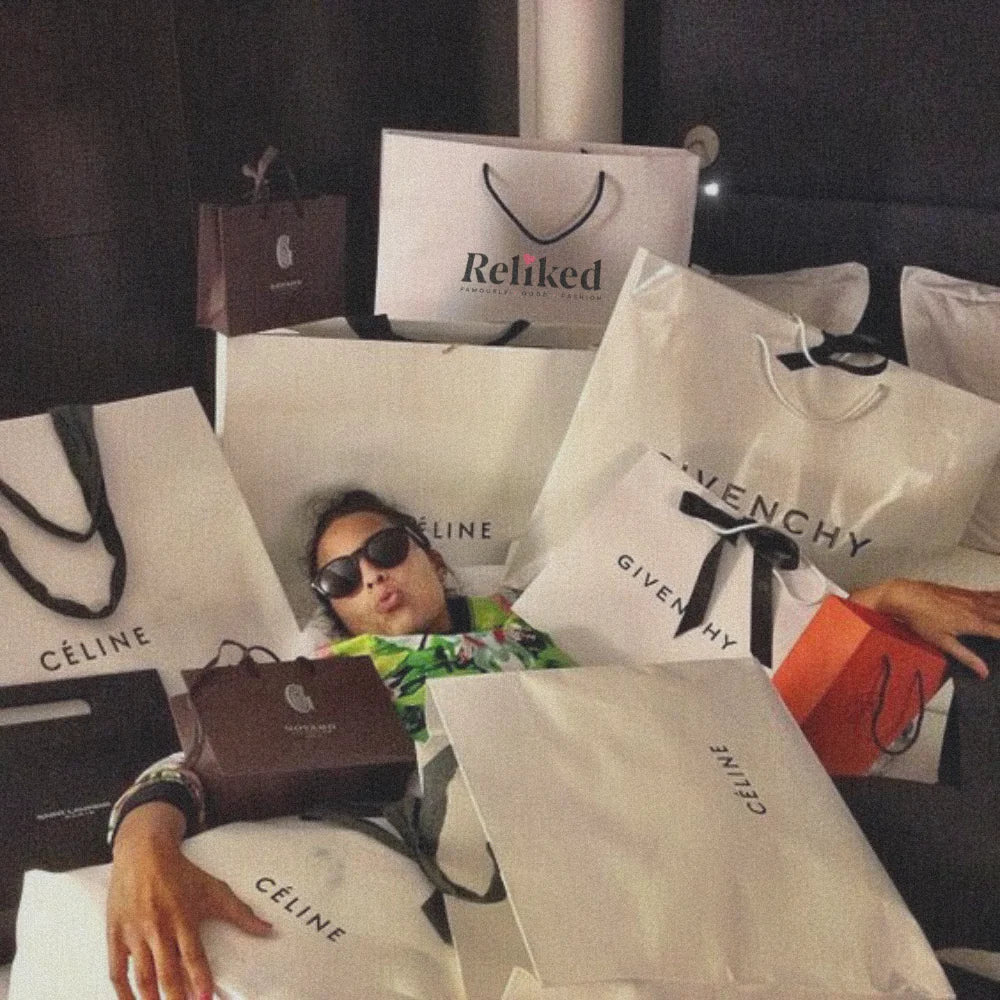Vegan fashion designers are growing in number all the time. Here we dive into everything you need to know about cruelty-free, vegan fashion.
There’s a lot to understand about cruelty-free vegan fashion and some bewildering terminology that can leave you confused. Vegan fashion designers are growing in number all the time with sustainable vegan fashion trends dominating much of the mainstream fashion world today.
Here we dive into everything you need to know about cruelty-free, vegan fashion and look at how buying pre-loved items, especially those from vegan influencers, helps to contribute to a more sustainable fashion industry.
What is vegan fashion?
First of all we need to distinguish between vegan fashion and cruelty-free vegan fashion. Vegan fashion covers clothing and accessories that don’t use any animal-based materials. However, as most vegans will be able to tell you, it’s not enough. For example, a bag that’s made using synthetic microfiber or polyester is likely to be vegan. However, what about the production of those synthetic materials – what if it leached contaminants into local waterways and thus harmed the local ecosystems, including wildlife?
Synthetic materials often greatly impact the environment in terms of how they are made. Think microplastics ending up in marine organisms or habitats being destroyed by fabric dyes in local rivers.
As such, those who hold to vegan ideals will, understandably, often say that vegan fashion isn’t enough. Instead it needs to be cruelty free and sustainable too. These items will be created with vegan materials that are also kind to the wider animal population and the environment. They need to be sustainable, ethical and cruelty-free. Hence the rise of vegan leather fabric made from materials such as apples.
For many, making the choice to buy vegan fashion that lives up to these standards is important. However, it’s not easy. And for those who follow these values in their fashion choices, turning to specific vegan fashion brands and influencers who share their ideals, can make it a much easier process.
Which materials are ok in vegan fashion?
Let’s start with the materials that vegan fashion absolutely needs to avoid. These include feathers, furs, silk, leather and wool. Then you need to consider the materials that are ostensibly vegan but actually impact wildlife, flora and fauna, as we explained above. These include materials such as polyester and microfiber which are made using products of the oil industry.
Then we can consider which materials are in line with cruelty-free vegan ideals. These are alternatives to animal-based materials which don’t simultaneously turn to other damaging products in the process. Luckily, there is a growing range of these materials.
Cruelty-free vegan materials are bio-based and are therefore biodegradable or compostable. They also include natural textile fibres and synthetic materials (from a recycled source), if they are manufactured in ways that don’t contribute to animal cruelty.
It’s really important that we include this ‘second hand’ concept. Let’s consider plastic for a moment. Plastic production is not cruelty-free. However, there is so much plastic on the planet, and it’s not biodegrading. But burning it or burying it is definitely harmful to animals and the environment. In vegan fashion, this plastic can be recycled so that at least it is being reused in a way that isn’t detrimental. In an ideal world the plastic wouldn’t have existed, but in the real world the next best thing is to now ensure that it is reused over and over and over again.
There are lots of different bio-based vegan materials too. These are continuing to grow. Examples include appleskin (apple), pinatex (pineapple), fruitleather (mango), linen, organic cotton, vegea (wine), econyl, wood, and natural rubber. Many of these are effectively imitation fabrics, but they have a really important role to play.
The role of pre-loved in sustainable vegan fashion
Whilst the vegan fashion meaning doesn’t actually directly include pre-loved clothes, we definitely need to consider them as part of eco-vegan fashion. It’s no good to simply take the vegan approach to new fashion production or we could simply be contributing inadvertently to the damage caused by fast fashion. If we simply discard vegan fashion items in the way we discard other fashion pieces we are still worsening the carbon footprint of the individual piece, and contributing to non-sustainable practice.
This is one of the reasons behind what we do at Reliked: we are determined to contribute to the circular fashion movement, even when it comes to vegan fashion. By ensuring no longer wanted fashion items find a new home and a new lease of life, we help to ensure that the carbon footprint of already produced items is as small as possible.
How to identify and choose vegan high fashion brands
As explained, it’s actually very difficult for the individual consumer to be sure that what they are buying isn’t just vegan fashion but is cruelty-free vegan fashion. It takes a lot of research and effort which is often far beyond the time and resources capabilities of the individual shopper.
The individual has two choices at this point: identify trusted vegan fashion designers and simply return to them time and again, and follow trusted influencers who share the same core values. Most individual consumers tend to do a mixture of the two approaches.
An excellent example of a cruelty-free vegan fashion influencer is Lucy Watson. Lucy is passionate about animal rights and has even been a global ambassador for PETA. As she has previously starred in ‘Made in Chelsea’ and is a successful vegan author and TV personality, it’s no surprise that there’s huge demand for her pre-loved items. Browse our Lucy Watson collection.
Not all of the items we sell on Reliked fit the bill of vegan fashion, so if these values are important to you then please shop by VIB. However, with our approach to selling on high-quality pre-loved clothes, we are helping to contribute to a fashion industry that thinks about the future of each and every item produced.


